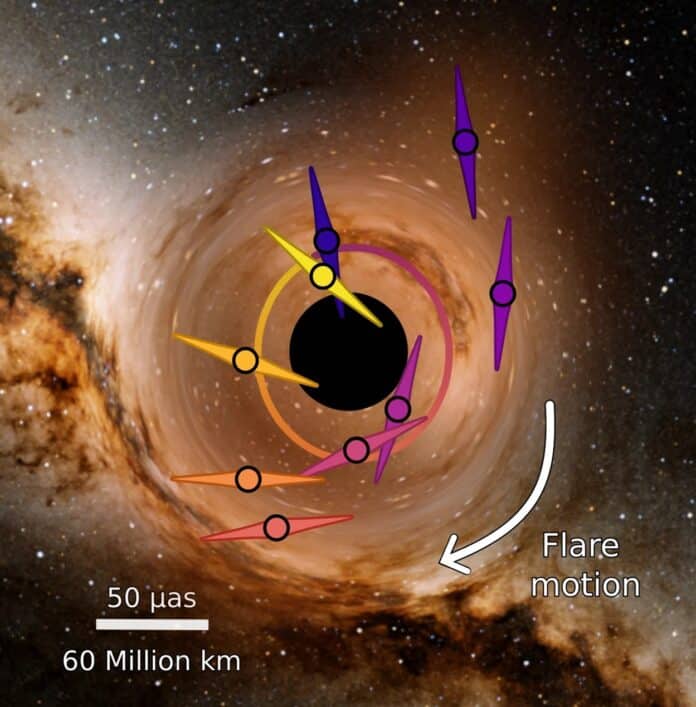The presence of a massive black hole (MBH) in the Galactic Center (GC) has been established, beyond any reasonable doubt, in a four-decade-long research by several teams. Our Milky Way also hosts a black hole with a mass of 4.3 million solar masses.
Astronomers from the Max Planck Institute for Extraterrestrial Physics (MPE) have now successfully determined the mass of the black hole from this motion, and the result exactly fits the calculation that was recognized with the 2020 Nobel Prize in Physics and has subsequently been improved. In summary, the 4.3 million solar masses are contained in an orbit around the Sun that is smaller than Venus’s.
The team used GRAVITY, the near-infrared interferometer at ESO’s Very Large Telescope Interferometer (VLTI), to monitor the emissions in the region around a black hole and probe flares. They analyzed flares observed during 2018, 2021, and 2022 and determined the mass of the black hole with high accuracy to be 4.297 million solar masses.
This new measurement is a solid and independent constraint to previous measurements. Additionally, they discovered that the mass exists inside the nine gravitational radii that surround the flares—a radius that is smaller than Venus’s orbit around the Sun.
Diogo Ribeiro, who was responsible for the theoretical modeling at MPE, said, “The mass we derived now from the flares at just a few gravitational radii is compatible with the value measured from the orbits of stars at several thousand gravitational radii. This strengthens the case for a single black hole at the center of the Milky Way.”
Studying the orbiting gas can help reveal how the Galactic Center structures were formed. There may be a physical connection between the flare orbits because their orientation is similar to that of a star disk detected at 100,000 gravitational radii.
Antonia Drescher, who analyzed the polarimetric measurements, said, “It is great to see the repeated, similar behavior of the flares. They all show a clockwise looped motion in the sky; all have a similar radius and orbital period. This is beautiful to see.”
Ribeiro said, “Strong winds from the stars farther out probably fuel the accretion flow of gas, which carries the initial angular momentum down to scales close to the event horizon. The amount of information from the polarization was extremely fruitful, and we learned a lot about the physics in the Galactic Center region from the joint data set. The dynamics of the flares may even carry information on the spin of the black hole – an open question today.”
This finding and the diameter of the millimeter shadow of Sgr A* thus support a single black hole model. Second, as shown by the observation of one polarization loop per astrometric loop and the lack of Doppler-boosting, the magnetic field arrangement is mostly poloidal (vertical), and the orbital plane of the flares has a slight inclination about the plane of the sky. Lastly, in keeping with recent simulations, both the position angle on the sky and the needed magnetic field strength imply that the winds of the massive young stars of the clockwise stellar disk from Sgr A* are responsible for fueling and controlling the accretion flow.
Journal Reference:
- GRAVITY Collaboration, R. Abuter, N. Aimar et al. Polarimetry and astrometry of NIR flares as event horizon scale, dynamical probes for the mass of Sgr A*⋆. Astronomy & Astrophysics. DOI: 10.1051/0004-6361/202347416
